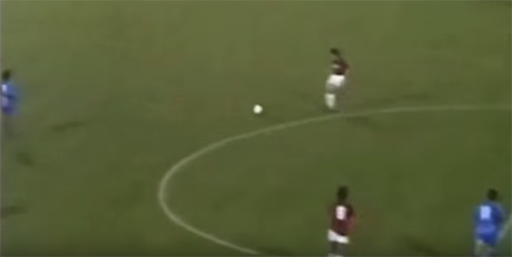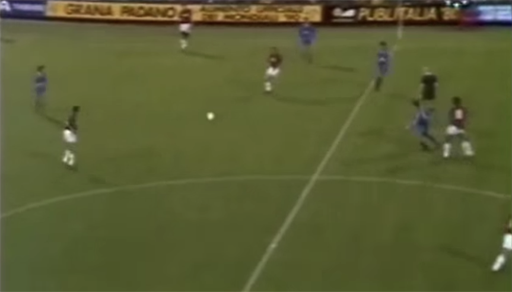WORLD CLASS COACHING
Build Up From the Back - A Tactical Analysis
By Luca Bertolini
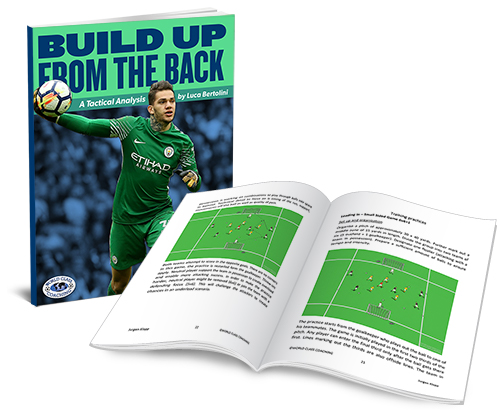
Table of Contents
PART ONE
Build Up From the Back and Building Up Play
The Early Years of Building Up From the Back
PART TWO
The Player Techniques and Tactical Skills Needed to Build Up From the Back
PART THREE
Player and Team Positions (Inc GK) to Best Build From the Back
The La Volpe Exit
PART FOUR
How the Top Coaches Have Success Building From the Back
Build Up From the Back and Building Up Play
Since Marcelo Bielsa and Pep Guardiola showed all their ideas on how to start the possession phase from the goalkeeper with their teams, footballers have increasingly discussed build up play. The influence of their soccer philosophy and principles of play is now very clear both in Europe and South America. The motherlands of soccer have prompted the majority of football fans around the world to have an opinion on the concept of build up play. Everyone, fans included, has an opinion as to whether building attacks from the goalkeeper with short passes is good and useful or not.
There are coaches who still prefer to see their goalkeepers starting the play with a long ball to reduce the risk of losing possession close to their own goal. But many others, like Ricardo La Volpe, Maurizio Sarri, Marcelo Bielsa, and Pep Guardiola will defend their ideals of building attacks from the back forever. Ricardo La Volpe gave a huge contribution to this principle of play, creating the well known "la salida lavolpiana,” a method to build up from the goalkeeper, when the build up phase of play must be started again, through the dropping back of a center midfielder between the center backs who move wider and with the full backs running up.
First of all, it's important to answer a philosophic question: Is build up play the same phase or pattern of play as building from the back?
What does “build up play” mean? To begin answering that question, let us take a step back. We can divide football into four phases; attacking, defending, transition from attack to defense and transition from defense to attack.

The attacking phase includes build up play, possession and counter-attacking (transition to attack), the defense phase includes counter-pressing (defensive transition) and preventing build up play and goal defense.
These are the main, summed up flows of play of every soccer match:
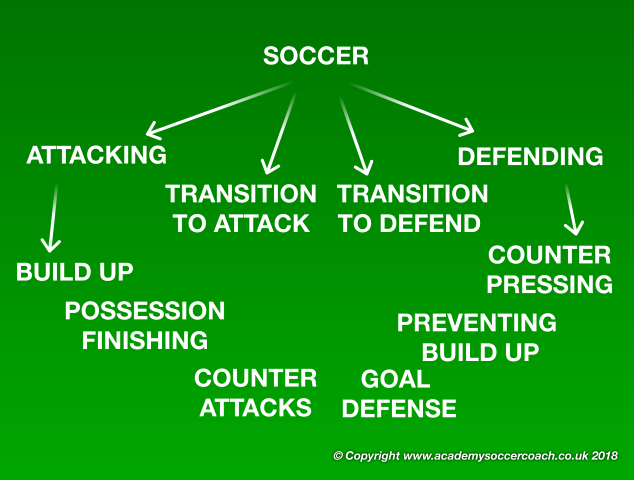
• If a team is building up then the opponent is preventing it
• If a team is in possession phase, trying to finish, then the opponent is defending the defense half and the goal
• If one team has just won possession and it is counter-attacking before the opponent is organized, then this opponent is probably in a counter-pressing phase, actively (pressing) or inactively (retreating to defend the space).
Then, if we want to define what kind of phase the building of play and the building up from the back are, we could write:
1) To build up play means that a team has the possession of the ball and it's trying to score while the opponent has already organized the defense phase, both through a long ball from the goalkeeper or a defender towards a forward or through short passes pattern of play.
2) Building from the back can be considered a part of “build up play” but it is a philosophy, a method to score and to win, starting the attacking moves from the goalkeeper or defenders and moving the ball, to stretch the opposition before creating a goal scoring opportunity.
I think another thin difference may be found out when talking about "building up from the back" and "playing out from the back"; both the situations should be coached through the same practices.
1) Building up from the back could be considered as a phase of play which starts from the goalkeeper or the defender in possession of a still ball and with the opposition who is not immediately able to put pressure. For example, the opposition forward can't press the first or second pass of the sequence. In general, we may talk about all the moves starting from the goal line or from a free kick near the goal (not from throw-ins as all the players can be pressed any time).

La Salida Lavolpiana (from the Argentinian coach Ricardo La Volpe) is a classic and well known tactical pattern of play to build up from the back, creating numerical advantages in the first third and in the middle third to play out.
2) Play out of from the back may be considered as a phase of play with a moving ball, where the team in possession is under pressure (midfielders and defenders), both inside the first third or in the middle third. The ball must be played back inside and throughout or toward the first third from the center, to avoid the opposition pressure, to switch the side or to find a new available space in the middle third, to play forward and to attack the opposition half (throw-ins inside the defense half could be included).
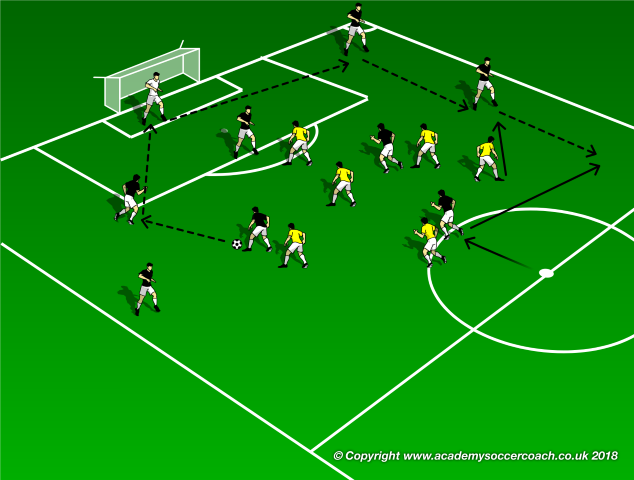
In this sequence the team in possession has already built up from the back to go forward the pitch, but the midfielders are under pressure of the opposition.
They must play back to the goalkeeper, through the right center defender, who then can switch side of play; the second center defender receives the ball wide on the opposite side and the center midfielder, who dropped back, is able to give balance and protection to the goalkeeper.
The center defender and the advanced fullbacks are then able to play out, taking advantage of a wide channel, together with the run of the center forward who escapes the marker to receive along the flank.
"Everything is much easier when the first progression of the ball is clean,” according to Juan Manuel Lillo. This is the dogma for every team to start from, which aims to begin the possession phase from the back.
To build up from the back doesn't mean only educating the players on a system of play, but it means to create a complete team structure to place them on the pitch in right positions, to progress the ball forward at speed, to move the opposition, to stretch the defense’s lines wide and deep and to arrive to finish the moves, finding the right time and space.
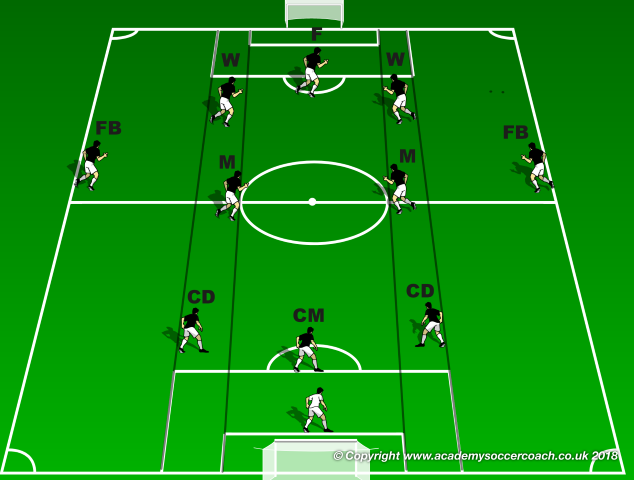
"I think that the best solution for building up and for playing out is the 1-3-4-3 formation, because it helps creating numerical advantages in the middle third,” said Ricardo La Volpe.
It also can create numerical or positional advantages when the building up breaks through the opposition’s first and second pressing lines, and the team is able to play the ball inside toward the crowded areas, in order to move the opposition defensive structure to one side (strong side) and creating space in other areas of the pitch (weak side) that can be exploited.
On the other hand, a team playing with a direct style of play will move the ball with deep pattern of play and towards teammates with physical advantages against the opposition and in advanced positions, to fight for the first ball with support for the second ball from the middle third.
The early building up from the back
It's easy to understand that all the players must be well skilled from an individual technical point of view, whatever their role. We may think that the building up from back principle of play was created as a potential idea when the goalkeeper couldn't catch back passes with their hands anymore, from the 1993-94 season.
From that season all the old school goalkeepers had to learn to use their feet to play rather than to kick the ball, the defenders and midfielders had to learn to move quicker than before to be unmarked, as those moves couldn't be considered as finished. Moreover, all the goalkeepers of the following generations have been coached to develop their technical skills at their best possible, as well as the defenders, who are now skilled like back midfielders when in possession.
AC Milan won the league twice (93/94) in a row and reached the Champions League two times in a row (three time if we count the 93 final against Olympique Marseille) after the change of the rule as the club was used to build up from the back since the late '80s, with Arrigo Sacchi as manager.
In the next few pictures, we are going to analyze how Arrigo Sacchi built up from the back, taking into consideration that the opponents did not press high on the field, but they were used to covering the depth under the ball line as the possession was lost and counter-pressing was just intended as 1 v 1 individual duels.
Build up from the back meant the ball carrier was to dribble up the field together with all the defense line to stay placed high on the middle line, or over it also. This way, Milan experienced the first forward defensive tactics ever, pressing on the ball and through the offside trick, in case of possession loss.
The center backs, Baresi and Costacurta, or the center midfielder Rijkaard were the players who dribbled the ball out of the defense third, finding space in middle as the opponents used to retreat inside the defense half.
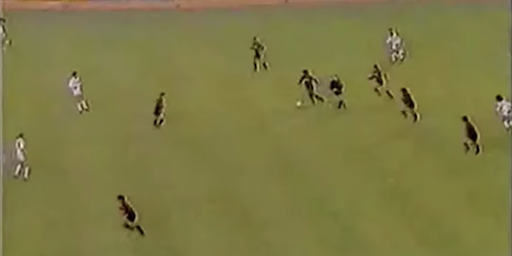
The main concept was to take advantage of the available space on the field...
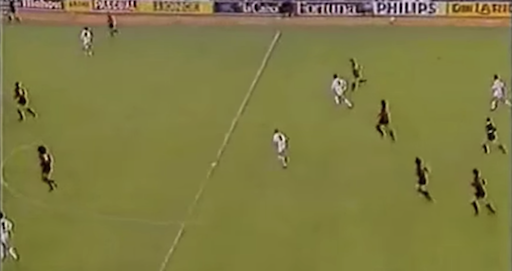
...even until the penalty area; the fullbacks always supported the move on the flanks.
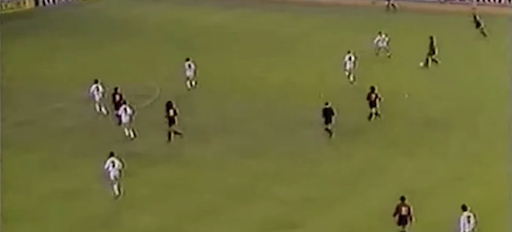
This is another sequence; Rijkaard dribbled the ball out of the first third...
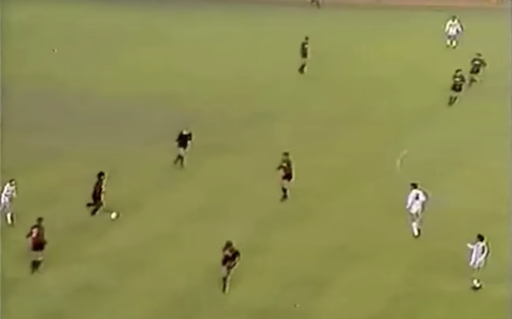
...and the building up of the move had the support of the fullbacks, on the right...
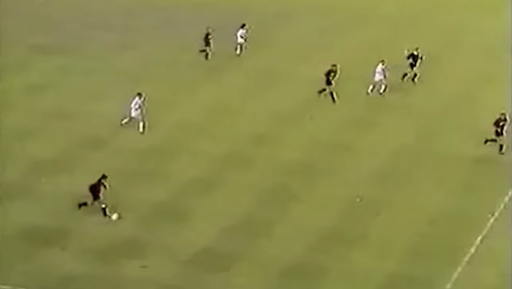
...and on the left side, at the same time. Fullbacks played as wingers.
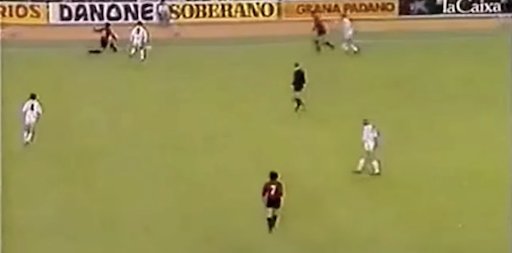
The build up phase of play had the main goal of creating space in the middle third, even against the opponents who were defending the depth as block, and to take advantage of these spaces, thanks to an unmarked player moving inside there.
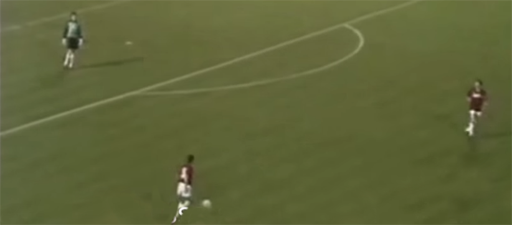
The ball was moved with short and quick passes, and with synchronized movements and timing of runs.
